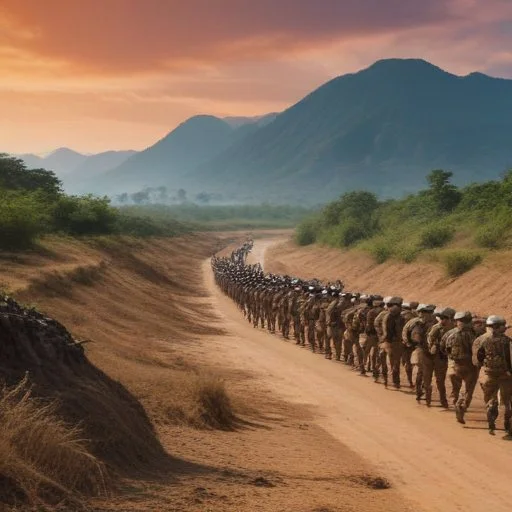In the early months of 1942, the Japanese Empire dealt a crushing blow to the Allied forces, capturing the strategic stronghold of Bataan in the Philippines. This pivotal event would go down in history as the largest defeat in American military history, marked by the infamous 65-mile Bataan Death March that would claim the lives of thousands of prisoners of war.
The stage was set for disaster when General Masaharu Homma's Japanese forces, fresh from a string of victories, converged on the Filipino peninsula of Bataan. American and Filipino troops, led by General Edward King Jr., were exhausted, starving, and outgunned, with supplies dwindling and disease rampant in their ranks. The Allied forces were backed into a corner, with the Japanese military closing in on all sides.
Faced with the daunting prospect of further bloodshed and loss of life, General King made the agonizing decision to surrender on April 9, 1942. This move would prove to be a crucial turning point in the war, as the Japanese Empire gained a foothold in Southeast Asia and the Allies suffered a crushing blow to their morale.
The surrender of Bataan marked the beginning of one of the darkest chapters in World War II history. The Allied prisoners of war were forced to embark on a grueling 65-mile march to Camp O'Donnell, with thousands perishing along the way due to brutal treatment, starvation, and exhaustion. This tragic event would become a symbol of Japanese brutality and a rallying cry for the Allied forces.
The fall of Bataan marked a significant shift in the balance of power in the Pacific, allowing the Japanese Empire to expand its reach in Southeast Asia. The event also had a profound impact on the American psyche, galvanizing public opinion and steeling the nation's resolve to fight on.
The Bataan Death March has become an enduring symbol of resilience and sacrifice, inspiring countless stories, films, and artworks. The event has also had a lasting impact on the national identity of the Philippines, serving as a powerful reminder of the nation's struggles and triumphs.
General Masaharu Homma, the commander of the Japanese forces that captured Bataan, was a complex and divisive figure. Born in 1888, Homma was a decorated veteran of the Russo-Japanese War and had a reputation for being a skilled and ruthless military strategist.
However, Homma's legacy was also marred by allegations of war crimes, including the atrocities committed during the Bataan Death March. Despite this, Homma was a charismatic leader who earned the respect of his troops and was known for his bravery in battle.

The Bataan Death March has had a profound and lasting impact on Filipino culture, serving as a powerful symbol of resilience and sacrifice. The event has been commemorated in numerous works of literature, art, and film, and continues to be an important part of the national identity of the Philippines.
The march has also been the subject of numerous memorials and tributes, including the Bataan Death March Memorial Highway, which runs along the route of the original march.
The fall of Bataan was a pivotal event in the broader geopolitical context of World War II. The Japanese Empire's conquest of Southeast Asia was a key component of its strategy to secure resources and expand its influence in the region.
The event also had significant implications for the balance of power in the Pacific, as it marked a major shift in favor of the Japanese Empire and forced the Allies to regroup and reassess their strategy.

The fall of Bataan has been the subject of much historical debate and controversy, with many historians questioning the decisions made by General Edward King Jr. and the Allied forces.
Despite these debates, the fall of Bataan remains an important and fascinating topic of historical study.
The Capas National Shrine, located in Tarlac, Philippines, is a powerful symbol of the sacrifices made by the prisoners of war who died during the Bataan Death March.
The shrine features a 70-foot obelisk and a museum dedicated to the history of the march, as well as a memorial wall bearing the names of the victims.
The shrine serves as a poignant reminder of the atrocities committed during World War II and is an important historical artifact.